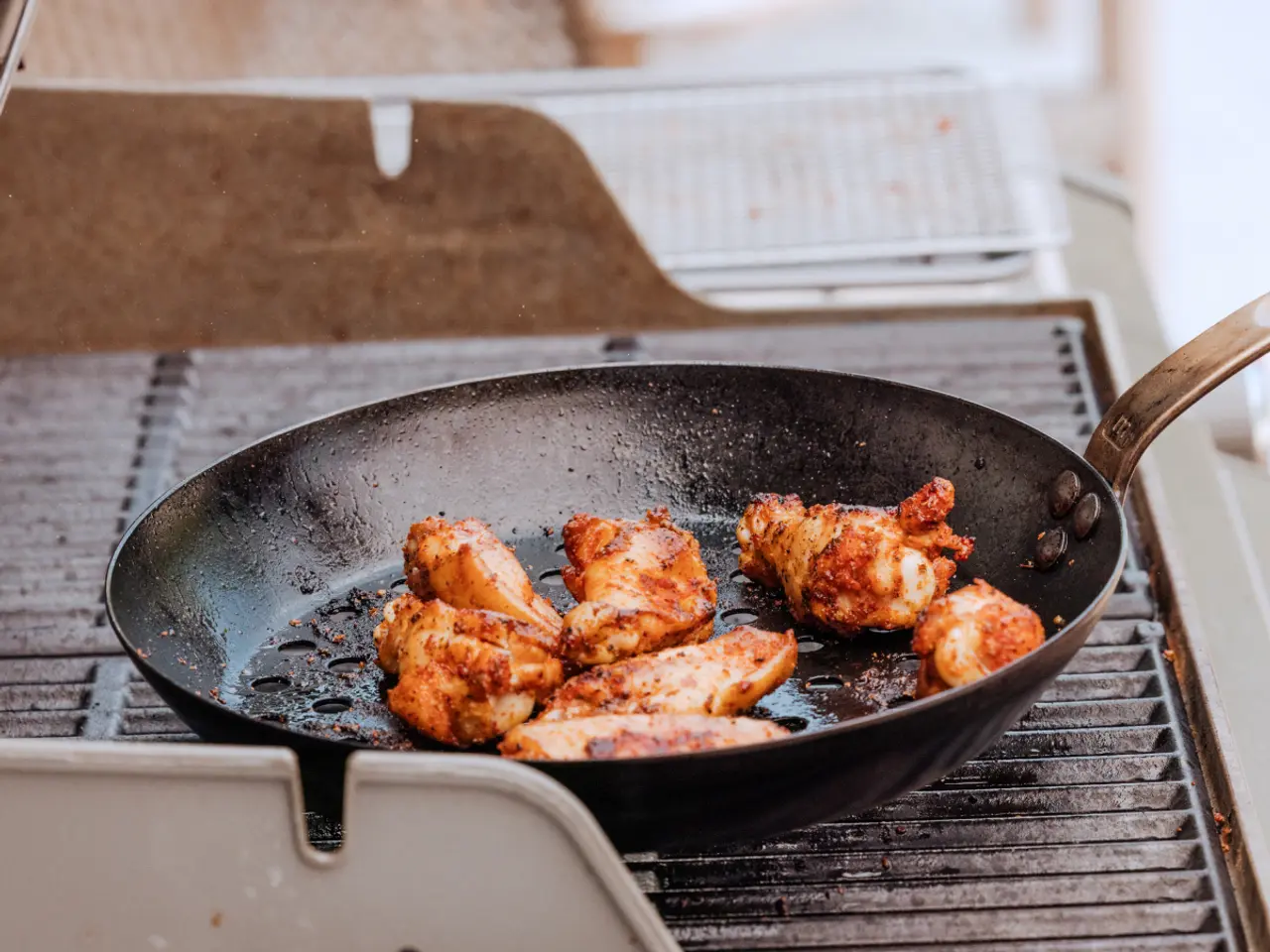While they’re convenient, finding pre-cut wings at your local grocery store isn't always so easy—especially around the holidays or Super Bowl Sunday when they’re in especially high demand. Luckily, even when you can't find pre-cut wings at your grocery store, you can usually find whole chicken wings that you can cut into flats, wing tips, and drums yourself. This is great for strengthening your knife skills, plus, it saves you money in the process.
The Anatomy of a Chicken Wing
Not sure where to begin? Start with an understanding of the difference between a drumette, a wingette, and a wing tip. When you buy whole chicken wings at the store, there are three main parts of the wing: the drum, the flat, and the wing tip. Here, we break down what all of those parts are, before we get into cutting them up.
What Is a Drumette?
A drumette (AKA drum) is usually the meatiest portion of the wing. It looks like a miniature drumstick and is made up of dark, juicy meat. If you're working from a whole chicken, this is the part of the wing that attaches the wing to the rest of the bird. The drumette is great for making game-day appetizers or even whole meals—especially when they're breaded and fried to crispy perfection.
What Is a Flat?
Next, you have the flat (AKA wingette). This is the middle section of the wing and is made up of two bones that run through the middle. This part of the wing tends to be thinner and contain less meat, but it's great to cook these up alongside drumettes because they tend to get a crispier skin.
What Is a Wing Tip?
Finally, there's the wing tip, which refers to the very end of the wing. You won't want to cook this up on its own, as it contains very little meat. Instead of discarding these, however, save them for a great addition to chicken stock or broth.
How to Cut Chicken Wings
Now that you have a better understanding of the different parts of a chicken wing, it's time to learn the proper technique for cutting whole chicken wings into their corresponding parts.
1. Choose the Right KnifeBecause you'll be cutting through skin and tough cartilage, having a sharp knife is key. We like our Chef Knife for this task because it’s sharp enough to cut through chicken wings effortlessly. Like all of our knives, it’s full tang and fully forged, meaning that it’s crafted from a single piece of stainless steel from tip to heel. This also makes it durable enough to break down a whole bird.
2. Locate Ridges Between JointsBegin by setting the chicken wing skin-side down on your Butcher Block. This will allow you to more easily locate the ridges between the joints so that you can cut the wing into the drumette, wingette, and wing tip. You may need to use your fingers to feel for each joint. Once you have located each section, you can move onto the next step.
3. Cut Through CartilagePlace your knife just beside the ridge between the drumette and the wingette. By applying a small amount of pressure, the knife should easily cut through the cartilage. If you experience any resistance, you may have hit a bone. You'll want to reassess the ridges on the wing until you've found the correct place to cut.
Follow the same steps for the ridge between the wingette and wing tip. From there, you should have three separate parts of the wing ready for your next recipe.
Ready to Cook?
Chicken wings can be cooked in a number of ways, but our favorite is throwing them on the grill. Our recipe for Grilled Chicken Wings uses a Texas BBQ rub you can make at home, a dry brine, and a few minutes on the grill. Paired with a scallion ranch dressing, it’s perfect for tailgating.






























